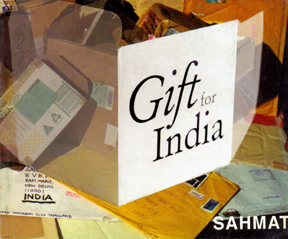The spontaneous anger generated by Safdar Hashmi’s murder on January 1,1989 grew into a resolve to resist the forces threatening the essentially pluralist and democratic spirit of creative expression. Writers, painters, scholars, poets, architects, photographers, designers, cultural activists and media persons formed the Safdar Hashmi Memorial Trust/ Committee within weeks of Safdar Hashmi’s death. From its inception SAHMAT has been a platform with a shared perspective, and has welcomed the distinctive creativities of those who have been part of its activities.
Over the years, SAHMAT has consciously decided to act in, and for the defence of cultural space. With the firm conviction that all creative endeavour in India both traditionally and contemporaneously upholds the values of secularism and cultural pluralism, SAHMAT has undertaken activities – performances, exhibitions, publication of books, posters, production of audio-video cassettes ----to underline the concept of unity in diversity of the Indian nation and the people. Through these activities it has been possible to discover and display new dimensions of many social issues, to open up the possibility of reaching out to different sections in new ways, and allow the broadest unity to be forged among artists, intellectuals and cultural activists.
As art historian Geeta Kapur put it,
“ SAHMAT has worked to build solidarity among the artists and intellectuals on questions of conscience in current politics especially in the areas of communalism. It has attempted more ambitiously to build a movement where an alert consciousness will anticipate fundamentalist tendencies in our national cultural life and provide a platform for those of us who should want to intervene in the social processes through their own practice…”
SAHMAT has endeavoured to highlight the best of India’s classical tradition and its modern art forms. The sources of these forms lie in the evolving synthesis of various streams and in the folk culture and wisdom carried down and enriched over generations. The hundreds of artists who have come together under the banner of ARTISTS AGAINST COMMUNALISM have carried on a sustained campaign against any attempt to proscribe creativity and impose on people a conformism of beliefs and practices which is alien to the pluralist and secular culture of this country. It is their firm conviction that all creative and intellectual endeavour in India has been exemplary in upholding values of secularism and cultural pluralism.
Communal mobilisation today wears the garb of ‘cultural nationalism’, a pernicious equation of culture and religion on the one hand, and the ‘syndication’ (to use Prof. Romila Thapar’s term) of both on the other. In the process several agendas become interwoven into one. Threats to freedom of expression, an increasingly ugly feature of socio-political life in the country, are expressive of the growing intolerance displayed by fundamentalist forces.
SAHMAT has promoted the secular and pluralist culture and traditions of the sub-continent through converts, seminars, workshops, and exhibitions in different parts of the country, and has mounted several protest actions in support of freedom of expression.
SAHMAT’s Publication Project
Over the last several years , SAHMAT has published and sold around 2 Lakh books. They include books for children, significant among which are two volumes of poetry and one anthology of short stories dedicated to promoting democratic and secular values by contemporary Hindi writers, A series of academic volumes on the themes of secularism, culture and economy have been brought out in both English and Hindi. The books are very reasonabaly priced.
Lakhs of posters have been printed including the series with Sufi-Bhakti texts and contemporary paintings. Around 90 percent of these are in Hindi and the rest in English, Urdu, Malyalam and Bengali.
Several audio-video cassettes of contemporary and classical poetry and music have been brought out to underline the commitment to cultural plurality.
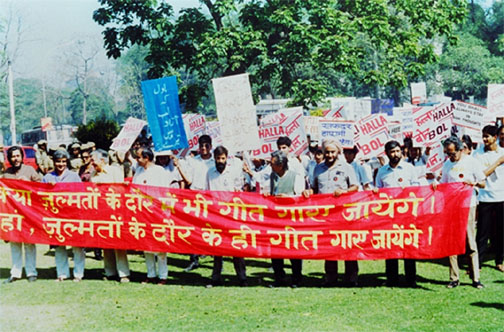

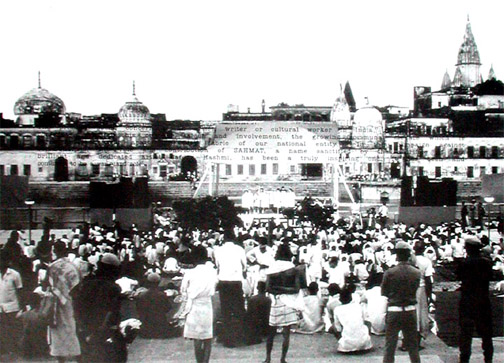
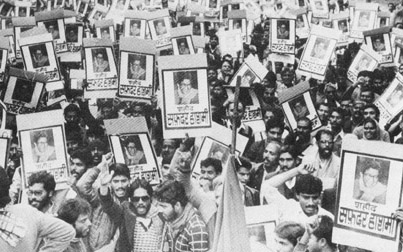
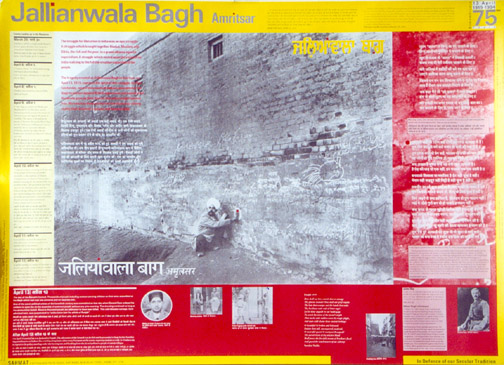

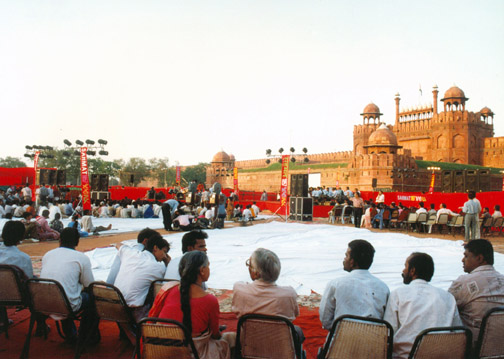

.jpg)
.jpg)
